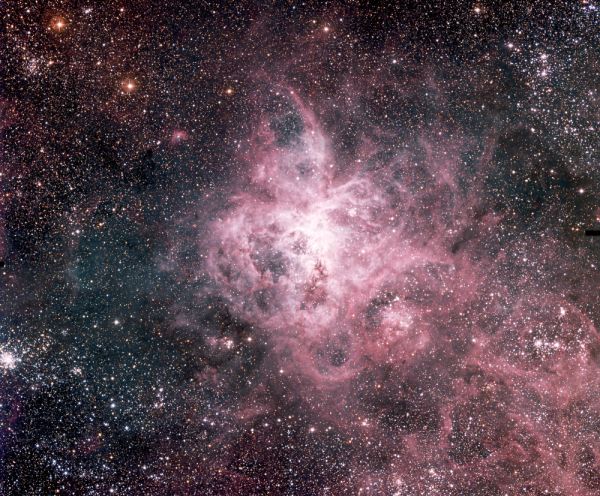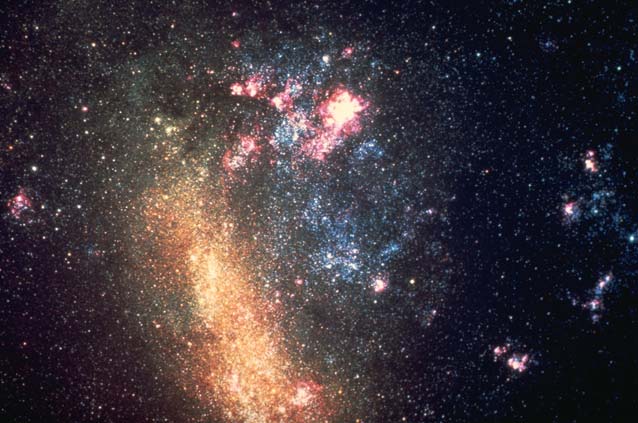Astronomy Picture of the Day
Discover the cosmos! Each day a different image or photograph of our fascinating universe is featured, along with a brief explanation written by a professional astronomer.
Posted on 06/21/2003 11:31:44 PM PDT by petuniasevan
Discover the cosmos! Each day a different image or photograph of our fascinating universe is featured, along with a brief explanation written by a professional astronomer.
Explanation: In the center of star-forming region 30 Doradus lies a huge cluster of the largest, hottest, most massive stars known. These stars and part of the surrounding nebula are captured here in this gorgeous visible-light Hubble Space Telescope image. Gas and dust clouds in 30 Doradus, also known as the Tarantula Nebula, have been sculpted into elongated shapes by powerful winds and ultraviolet radiation from these hot cluster stars. Insets in the picture represent corresponding views from the Hubble's infrared camera where each square measures 15.5 light-years across. Penetrating the obscuring dust, these infrared images themselves offer detailed pictures of star formation within the nebula's collapsing clouds, revealing the presence of newborn massive stars. The 30 Doradus Nebula lies within a neighboring galaxy, the Large Magellanic Cloud, located a mere 170,000 light-years away.
NGC 2070
Tarantula Nebula; 30 Doradus
| Right Ascension | 05 : 38.7 (h:m) |
|---|---|
| Declination | -69 : 06 (deg:m) |
| Distance | 179.0 (kly) |
| Visual Brightness | 8 (mag) |
| Apparent Dimension | 40 x 25 (arc min) |
This is an image from the Wide-Field Camera at ESO's facility at La Silla, Chile.

And here is the LMC galaxy; the Tarantula is clearly a dominant feature in bright red near the top of the image.


Disclaimer: Opinions posted on Free Republic are those of the individual posters and do not necessarily represent the opinion of Free Republic or its management. All materials posted herein are protected by copyright law and the exemption for fair use of copyrighted works.